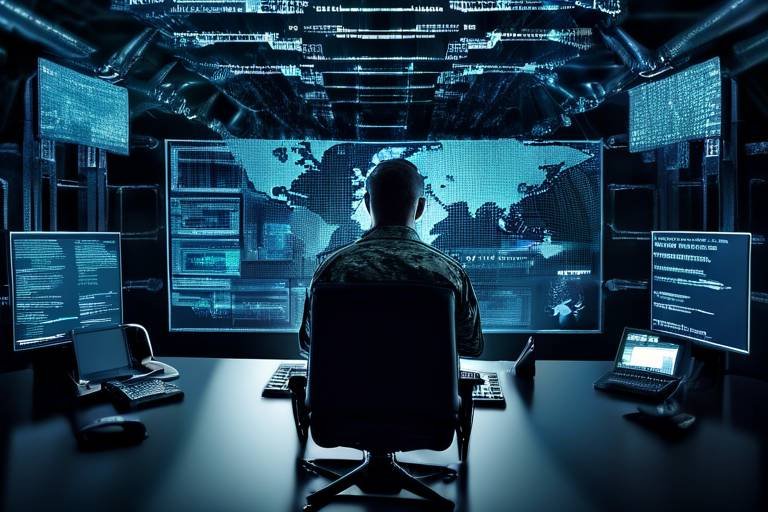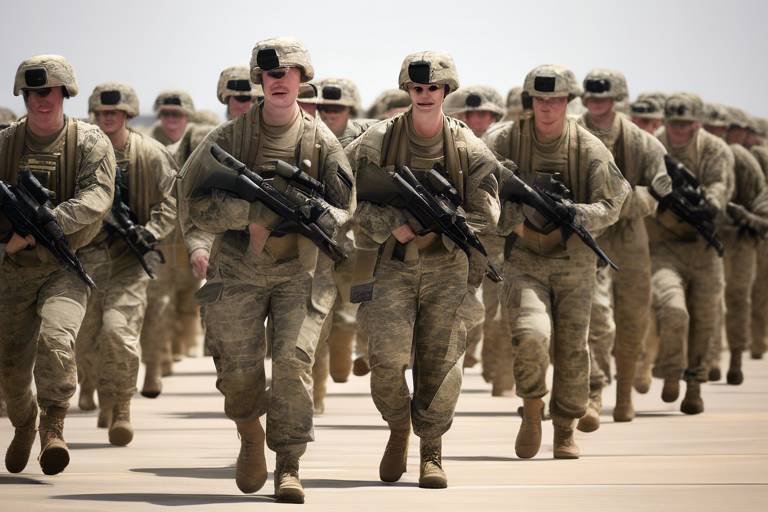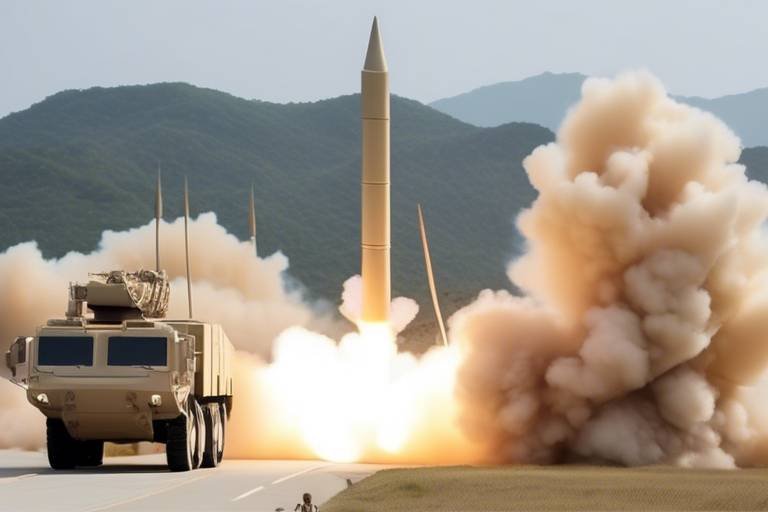Understanding the Benefits of Advanced Warfare Simulations
In today's fast-paced world, where the nature of warfare is constantly evolving, advanced warfare simulations have emerged as a cornerstone of military training and strategy development. These simulations offer a multitude of benefits that not only enhance the readiness of military personnel but also foster innovation in defense technologies. Imagine a training environment where soldiers can engage in realistic combat scenarios without the inherent risks of live exercises. This is the power of advanced warfare simulations, which provide a safe yet challenging platform for honing tactical skills and decision-making abilities.
One of the most significant advantages of these simulations is their ability to enhance tactical decision-making. In a world where every second counts, the ability to make quick, informed choices can mean the difference between success and failure on the battlefield. By immersing military personnel in realistic scenarios, simulations prepare them to respond effectively under pressure. Think of it like a high-stakes video game where every move counts—except in this case, the stakes are much higher. The lessons learned in these simulated environments translate directly to real-world situations, ultimately improving the tactical effectiveness of military operations.
Moreover, the financial implications of using advanced warfare simulations cannot be overlooked. Traditional live exercises can be incredibly costly, involving extensive logistics, equipment, and personnel expenses. By utilizing simulations, military organizations can significantly reduce these costs while still providing comprehensive training experiences. This allows for a more efficient allocation of resources, enabling funds to be redirected towards critical areas such as research and development or personnel welfare. In essence, simulations serve as a cost-effective training solution that maximizes the value of every dollar spent.
Utilizing simulations reduces the need for expensive live exercises, allowing military organizations to allocate resources more efficiently while still providing comprehensive training experiences for personnel.
Another key benefit of advanced warfare simulations is their ability to reduce risks in training. Training in live environments can expose soldiers to various dangers, including physical injuries and equipment damage. Simulations, on the other hand, offer a safe space for soldiers to practice complex operations without these risks. This not only protects the well-being of personnel but also preserves valuable military assets. Imagine training for a high-speed chase or a tactical breach without the fear of injury or loss of equipment; that’s the reality simulations provide.
The incorporation of virtual reality technology into simulations takes this experience to the next level. Trainees can engage with scenarios in an immersive environment that enhances learning and retention. Virtual reality allows soldiers to feel as though they are truly in the field, reacting to threats and making decisions in real-time. This level of engagement is crucial for developing the muscle memory and mental acuity needed for high-pressure situations.
One of the most appealing aspects of advanced warfare simulations is their scalability. These simulations can be easily adjusted to accommodate different unit sizes and mission complexities. Whether training a small special operations team or a large battalion, simulations can be tailored to meet specific training objectives. This versatility makes them invaluable tools for preparing a wide range of military personnel for various operational scenarios.
Advanced simulations also provide immediate feedback on performance, which is essential for skill development. Trainers can assess individual and team performance in real-time, identifying strengths and areas for improvement. This continuous feedback loop helps in cultivating competent military leaders who are well-prepared for the challenges they will face in the field. Think of it as having a coach who provides instant insights, allowing you to refine your skills continuously.
These simulations enable military strategists to model various conflict scenarios, allowing for thorough analysis and preparation for potential future engagements, enhancing overall strategic readiness.
Furthermore, simulations foster collaboration and communication among military units. By working together in these virtual environments, personnel learn to navigate the complexities of teamwork and improve their group dynamics, which are essential for successful operations in the field. In a way, it's like rehearsing a play—each actor must know their role and how to work with others to bring the story to life.
Finally, the development of advanced warfare simulations drives innovation in military technology. As new equipment and tactics are tested in these controlled environments, they can be refined and improved before being deployed in real-world situations. This cycle of innovation not only enhances military effectiveness but also ensures that defense systems remain at the cutting edge of technology.
- What are advanced warfare simulations? - These are realistic training environments that allow military personnel to practice tactics and decision-making without the risks associated with live exercises.
- How do simulations enhance tactical decision-making? - They immerse personnel in high-pressure scenarios, helping them develop the skills needed to make quick and informed decisions.
- Are simulations cost-effective? - Yes, they significantly reduce the costs associated with live training exercises while still providing comprehensive training experiences.
- How does virtual reality play a role in simulations? - Virtual reality technology creates immersive experiences that enhance learning and retention for trainees.
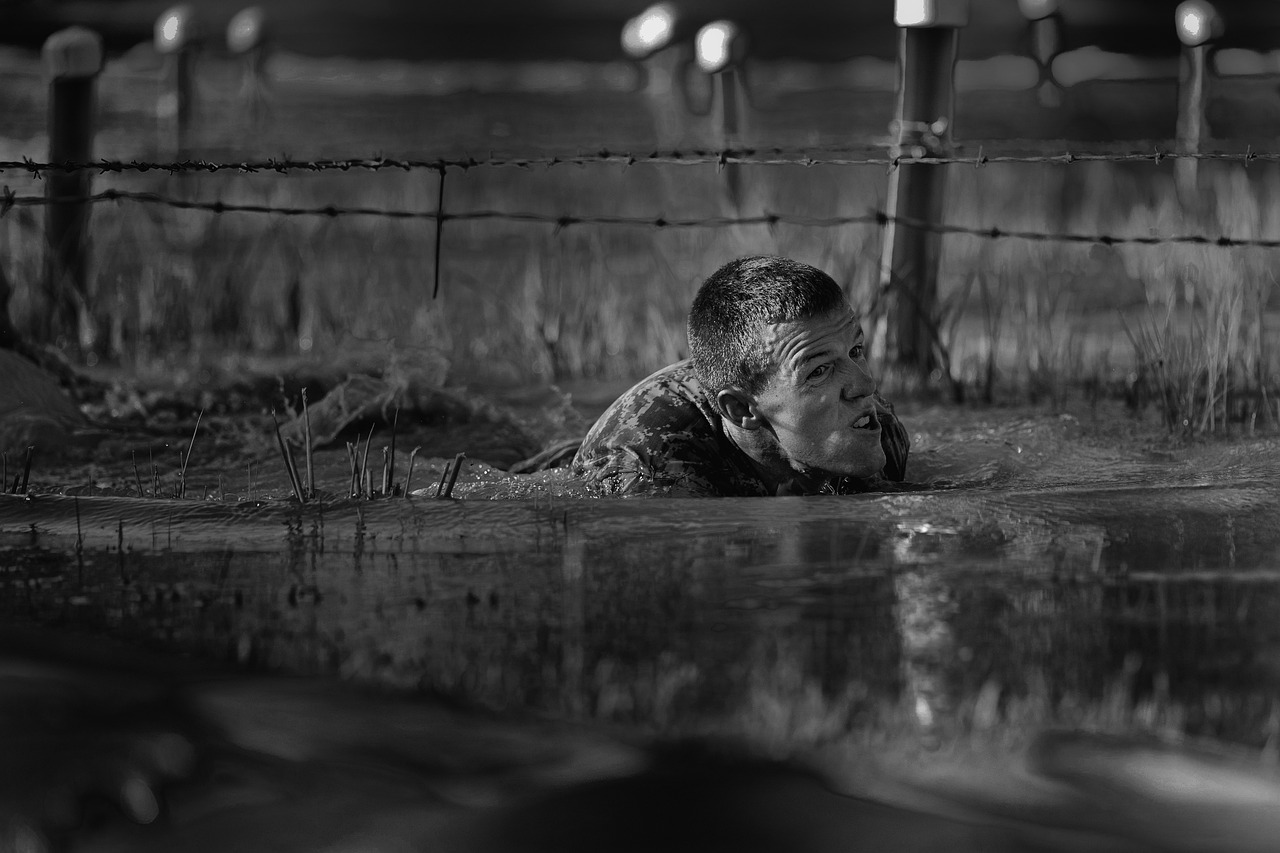
Enhancing Tactical Decision-Making
In the high-stakes world of military operations, the ability to make rapid and informed decisions can mean the difference between success and failure. Advanced warfare simulations are revolutionizing the way military personnel sharpen their decision-making skills. By immersing soldiers in realistic scenarios, these simulations create environments that closely mimic the complexities of actual combat situations. Imagine a battlefield where every choice you make can lead to victory or defeat; that’s the kind of pressure these simulations emulate. The goal is to enhance tactical effectiveness, ensuring that when the moment of truth arrives, soldiers are ready to act decisively.
One of the most significant advantages of these simulations is their ability to provide immediate feedback. After each scenario, trainees can analyze their decisions, understanding what worked, what didn’t, and why. This instantaneous evaluation allows them to learn from mistakes in real-time, a luxury that live training exercises simply cannot offer. For instance, if a soldier hesitates during a critical moment, simulations can highlight that hesitation, prompting discussions on how to overcome such challenges in the future.
Moreover, these simulations often incorporate multiple variables that can change dynamically, reflecting the unpredictable nature of warfare. This aspect not only tests the soldiers' tactical skills but also their ability to adapt to evolving situations. They learn to think on their feet, adjusting their strategies based on real-time developments, which is crucial in any military engagement. For example, if a unit encounters unexpected enemy resistance, they must quickly reassess their plan and decide whether to advance, retreat, or find cover. Such scenarios teach them to remain calm under pressure and to weigh their options carefully.
Additionally, advanced warfare simulations foster a culture of teamwork and communication. In many military operations, success hinges on the ability of units to work together seamlessly. During simulations, soldiers learn to communicate effectively with their teammates, share vital information, and coordinate their actions. This collaborative aspect is often reinforced through structured debriefings where teams discuss their performance, analyze group dynamics, and identify areas for improvement. By practicing these skills in a safe environment, soldiers can build a strong foundation that translates into real-world operations.
In summary, advanced warfare simulations are not merely training tools; they are essential components of modern military strategy. They enhance tactical decision-making by providing realistic, high-pressure environments where soldiers can practice and refine their skills. The combination of immediate feedback, dynamic scenarios, and emphasis on teamwork creates a comprehensive training experience that prepares military personnel for the complexities of actual combat. As technology continues to evolve, so too will the capabilities of these simulations, further enhancing the decision-making prowess of our armed forces.

Cost-Effective Training Solutions
In the realm of military training, the phrase "cost-effective" is often the golden ticket to optimizing resources without compromising quality. Advanced warfare simulations are a game-changer in this respect. By utilizing these sophisticated tools, military organizations can significantly cut down on the expenses associated with traditional training methods. Imagine the savings when you can replicate complex battle scenarios without the need for live ammunition, fuel for vehicles, or the logistical nightmare of transporting troops to various locations. It's like having a high-octane action movie at your fingertips, where you can hit 'restart' without any financial repercussions.
Moreover, simulations allow for a more flexible training schedule. Instead of coordinating large-scale exercises that require extensive planning and resources, military units can engage in simulation training at any time and place. This flexibility not only enhances readiness but also ensures that training can be tailored to the immediate needs of the unit. For example, if a unit needs to sharpen its skills for a specific type of operation, simulations can be quickly adjusted to focus on that particular scenario, making training both relevant and immediate.
Another significant advantage of simulations is the reduction of wear and tear on expensive military equipment. Live exercises can lead to costly repairs and replacements, but with simulations, the only thing that gets worn out is the software. This not only saves money but also preserves the integrity of the equipment for actual missions. In fact, many military organizations are finding that the cost savings from using simulations can be reinvested into other critical areas, such as research and development of new technologies or improving the welfare of personnel.
To put the financial benefits into perspective, let's look at a simple comparison:
| Training Method | Estimated Cost | Advantages |
|---|---|---|
| Live Exercises | High | Realistic experience, team bonding |
| Advanced Simulations | Low to Moderate | Flexible, safe, scalable, and resource-efficient |
As you can see, the cost of live exercises can be prohibitive, especially when compared to the relatively lower expenses associated with advanced simulations. This financial efficiency is crucial, especially in times when defense budgets are scrutinized and need to be justified. By adopting these innovative training solutions, military organizations can ensure that they are not only preparing their personnel effectively but also doing so in a manner that is fiscally responsible.
In conclusion, advanced warfare simulations are not just a trend; they are a revolution in military training. They offer a plethora of cost-effective solutions that enhance training quality while minimizing expenses. As the military continues to evolve in response to modern challenges, the integration of simulations will undoubtedly play a pivotal role in shaping the future of defense readiness.
- What are advanced warfare simulations? Advanced warfare simulations are sophisticated training tools that replicate realistic combat scenarios, allowing military personnel to practice tactics and decision-making in a controlled environment.
- How do simulations save costs? They reduce the need for live exercises, which can be expensive due to logistics, ammunition, and equipment wear and tear.
- Can simulations be customized? Yes, simulations can be easily adjusted to fit various training needs, unit sizes, and mission complexities.
- Are there any risks associated with simulation training? No, simulations provide a safe environment for training, minimizing the risk of injury and equipment damage.

Reducing Risks in Training
When it comes to military training, safety is of utmost importance. Advanced warfare simulations have emerged as a game-changer in this regard, providing a safe haven for soldiers to hone their skills without the physical dangers associated with traditional live training exercises. Imagine a world where troops can practice complex maneuvers, strategize under pressure, and face simulated enemy encounters—all without the risk of injury or equipment damage. This is not just a dream; it’s the reality offered by modern simulation technology.
One of the most significant advantages of these simulations is the ability to replicate high-stress environments while keeping personnel out of harm's way. For instance, soldiers can engage in combat scenarios that include everything from urban warfare to large-scale battlefield engagements. This allows them to experience the adrenaline and pressure of real-life situations, but in a controlled setting where the stakes are not life or death. By eliminating physical risks, military organizations can focus on what truly matters: training effective and competent leaders.
Moreover, the use of simulations reduces the wear and tear on actual equipment. Live exercises often require extensive resources—fuel, ammunition, and maintenance—leading to significant operational costs. With simulations, these costs are drastically reduced. For example, a recent analysis showed that using simulations can cut training expenses by up to 50% compared to traditional methods. This means that funds can be redirected towards other crucial areas, such as research and development or improving soldier welfare.
The safety provided by simulations also encourages a culture of learning and experimentation. Soldiers can take risks in a virtual environment without the fear of real-world consequences. They can make mistakes, learn from them, and try again, which is essential for mastering complex skills. This iterative process not only builds confidence but also enhances their ability to adapt to unforeseen challenges during actual missions.
In summary, advanced warfare simulations are revolutionizing military training by significantly reducing risks. They provide a safe environment for soldiers to train, practice, and prepare for real-world scenarios, all while conserving resources and fostering a culture of learning. As we continue to innovate and integrate technology into military training, the benefits of these simulations will only grow, ultimately leading to a more prepared and capable defense force.

Virtual Reality Integration
In recent years, the integration of virtual reality (VR) technology into advanced warfare simulations has revolutionized military training. Imagine stepping into a fully immersive environment where you can experience combat scenarios as if you were truly in the field. This is not just a futuristic dream; it's a reality that is enhancing the way soldiers prepare for real-life challenges. VR allows trainees to engage with their surroundings in a way that traditional training methods simply cannot match.
One of the most significant benefits of VR integration is the ability to create highly realistic training environments. Soldiers can practice various scenarios, from urban warfare to tactical maneuvers in diverse terrains, all while receiving immediate feedback on their performance. This immersive experience not only boosts engagement but also improves learning retention. When soldiers can visualize and interact with their training, the lessons learned become more impactful and memorable.
Furthermore, VR simulations can be tailored to reflect specific mission objectives, allowing for a customized training experience. For instance, a unit preparing for a peacekeeping mission can engage in simulations that replicate the cultural and geographical nuances of the area they will be deployed to. This level of detail is crucial for developing a soldier's situational awareness and decision-making skills in complex environments.
Another key advantage of VR integration is the ability to conduct joint training exercises with allied forces, even if they are located thousands of miles apart. Through VR, military personnel from different countries can collaborate in real-time, practicing coordinated tactics and strategies. This not only fosters international cooperation but also enhances interoperability between allied nations, which is essential in modern warfare.
As technology continues to evolve, the future of VR in military training looks promising. With advancements in haptic feedback and sensory immersion, the training experiences will become even more realistic. Imagine feeling the vibrations of distant explosions or the weight of equipment as you navigate through a simulated battlefield. These enhancements will further prepare soldiers for the unpredictability of real combat situations.
In conclusion, the integration of virtual reality into advanced warfare simulations is a game-changer for military training. By providing immersive, realistic environments, VR not only enhances learning and retention but also prepares soldiers for the complexities of modern warfare. As we continue to embrace these technological advancements, the effectiveness of military training will undoubtedly reach new heights.
- What is virtual reality integration in military training?
Virtual reality integration involves using VR technology to create immersive training environments that simulate real-life combat scenarios, enhancing the learning experience for military personnel. - How does VR improve training effectiveness?
VR improves training effectiveness by providing realistic scenarios that enhance engagement, retention, and situational awareness, allowing soldiers to practice complex operations safely. - Can VR training be conducted with allied forces?
Yes, VR technology enables joint training exercises with allied forces, allowing military personnel from different countries to collaborate in real-time despite geographical distances. - What are the future prospects for VR in military training?
The future of VR in military training is promising, with advancements in technology leading to even more realistic and immersive training experiences that prepare soldiers for the unpredictability of combat.
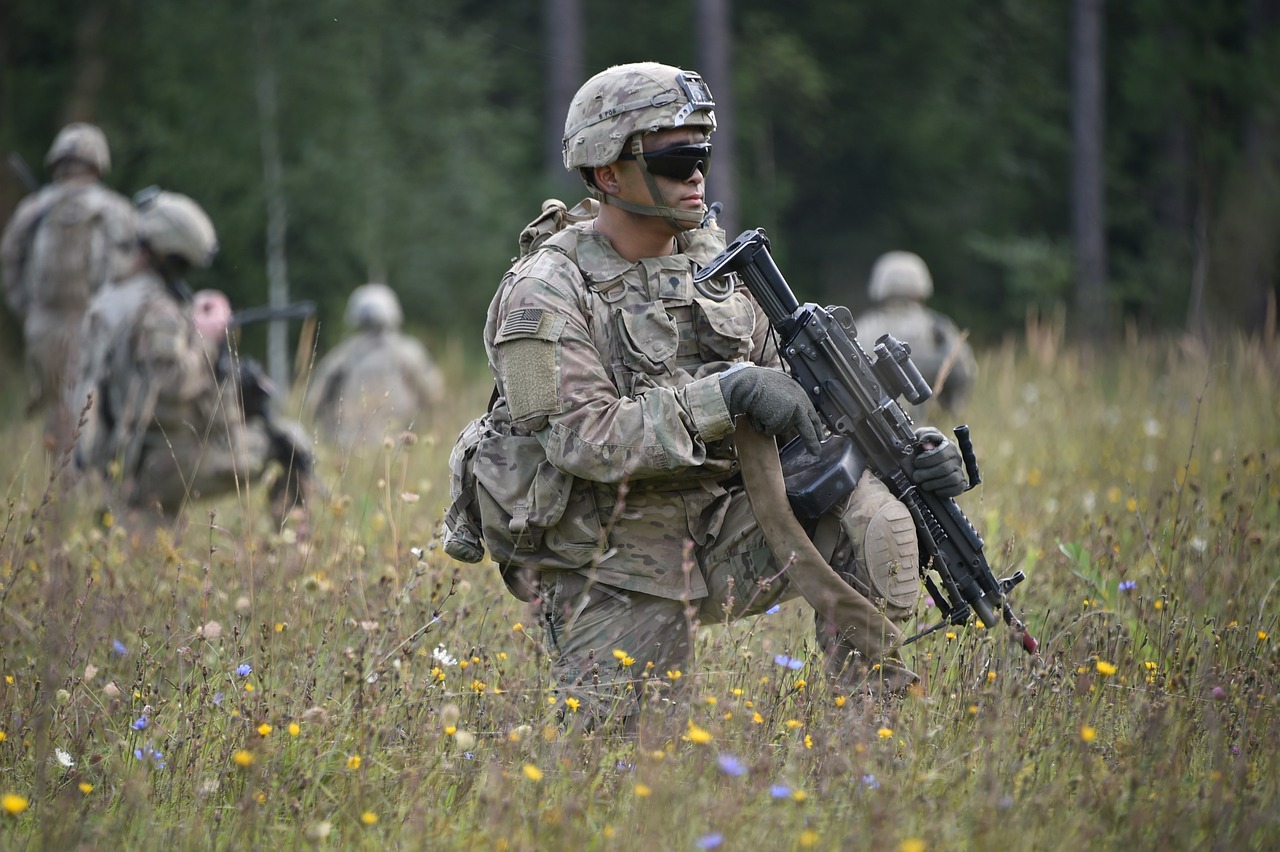
Scalable Training Environments
One of the most remarkable features of advanced warfare simulations is their scalability. This means that these simulations can be tailored to fit a wide range of training needs, accommodating everything from small units to large battalions. Imagine being able to replicate any battlefield scenario, regardless of its size or complexity, all within a controlled environment. This flexibility is crucial, especially when considering the diverse nature of military operations today.
For instance, a small tactical team might require a focused simulation that emphasizes close-quarters combat and decision-making under duress. On the other hand, a larger unit may need a comprehensive exercise that simulates multi-branch operations involving air, land, and sea forces. The beauty of scalable training environments lies in their ability to adapt to these varying requirements without compromising the quality of the training experience.
Furthermore, scalability allows military trainers to progressively increase the complexity of scenarios as personnel develop their skills. This means that soldiers can start with basic exercises and gradually move on to more intricate operations that challenge their problem-solving abilities and teamwork. It’s like climbing a ladder: each rung represents a new level of difficulty and learning, ensuring that soldiers are well-prepared for real-world challenges.
Advanced warfare simulations also facilitate resource allocation. By customizing training environments to fit specific unit sizes and mission types, military organizations can optimize their use of time, personnel, and equipment. Instead of conducting a one-size-fits-all live exercise, which can be costly and time-consuming, simulations allow for targeted training that meets the exact needs of each unit. This not only saves money but also ensures that every soldier gets the most out of their training experience.
In summary, the scalability of advanced warfare simulations is a game-changer in military training. By providing adaptable environments that cater to different unit sizes and complexities, these simulations enhance training effectiveness, promote skill development, and ultimately contribute to a more competent and prepared military force.
- What are advanced warfare simulations?
Advanced warfare simulations are computer-based training programs designed to replicate military operations, allowing personnel to practice tactics and strategies in a safe and controlled environment.
- How do simulations enhance decision-making?
By presenting realistic scenarios, simulations train military personnel to make quick and informed decisions under pressure, improving their tactical effectiveness in real-world situations.
- Are simulations cost-effective?
Yes, simulations significantly reduce the need for expensive live exercises, allowing military organizations to allocate resources more efficiently while still providing comprehensive training experiences.
- Can simulations be used for large units?
Absolutely! Advanced warfare simulations are scalable, meaning they can be adjusted to accommodate various unit sizes and mission complexities.
- What role does virtual reality play in simulations?
Virtual reality enhances simulations by creating immersive experiences that improve learning and retention, allowing trainees to engage with scenarios in a more impactful way.
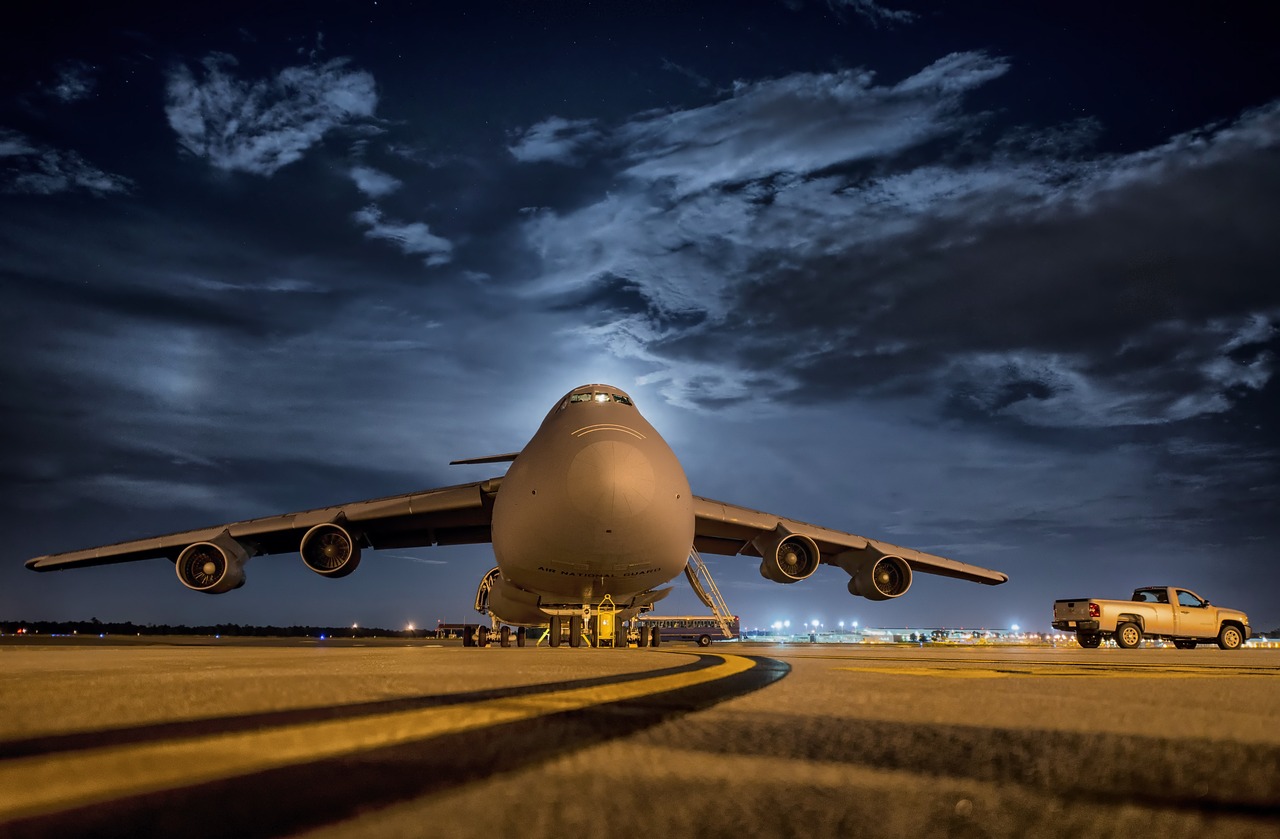
Feedback and Performance Evaluation
In the realm of advanced warfare simulations, play a pivotal role in shaping the future of military training. Imagine stepping into a virtual battlefield where every decision you make is tracked, analyzed, and reviewed in real-time. This is not just a dream; it's the reality of modern military simulations. The immediate feedback provided during these exercises allows trainees to understand their strengths and weaknesses on the fly, making the learning process not only efficient but also incredibly effective.
One of the most significant advantages of using advanced simulations is the ability to gather data on individual and team performance. In traditional training scenarios, feedback often comes too late, after the exercise has concluded. However, with simulations, instructors can assess actions as they happen, providing insights that are fresh and relevant. This immediacy helps to bridge the gap between theory and practice, ensuring that military personnel can apply what they learn in real-world situations.
Moreover, the feedback mechanism in these simulations can be tailored to meet specific training objectives. For instance, a simulation might focus on improving communication skills within a unit. In such cases, performance metrics could include:
- Response times to commands
- Clarity of communication
- Team cohesion during stressful scenarios
By analyzing these metrics, trainers can pinpoint areas where improvement is needed, fostering a culture of continuous learning and adaptation. It’s akin to having a personal coach who not only cheers you on but also provides constructive criticism to help you refine your skills. This approach is crucial for developing competent military leaders who can think on their feet and adapt to rapidly changing situations.
Furthermore, the use of advanced simulations allows for a more comprehensive performance evaluation system. Instead of relying solely on subjective assessments, military organizations can implement quantitative measures to gauge effectiveness. For example, a table summarizing performance metrics might look like this:
| Metric | Before Simulation | After Simulation | Improvement (%) |
|---|---|---|---|
| Decision-Making Speed | 12 seconds | 8 seconds | 33% |
| Team Communication Clarity | 70% | 90% | 28.57% |
| Operational Cohesion | 65% | 85% | 30.77% |
This table illustrates not just the improvement in performance but also the effectiveness of simulations in enhancing key military skills. As personnel train and receive feedback, they can track their progress over time, motivating them to strive for excellence.
In conclusion, feedback and performance evaluation are integral components of advanced warfare simulations. They provide a structured yet flexible approach to training, enabling military personnel to refine their skills, enhance their decision-making abilities, and prepare for the complexities of modern warfare. As the military continues to embrace these technologies, the future looks bright for developing highly skilled and adaptable forces.
- What are advanced warfare simulations?
Advanced warfare simulations are sophisticated training tools that replicate real-world combat scenarios to enhance military training and decision-making. - How do simulations improve feedback?
Simulations provide real-time data and performance metrics, allowing for immediate feedback and targeted improvement. - Are simulations safe for training?
Yes, they offer a safe environment for practicing complex operations without the physical risks associated with live training. - Can simulations be customized?
Absolutely! Simulations can be tailored to meet specific training objectives and unit needs.
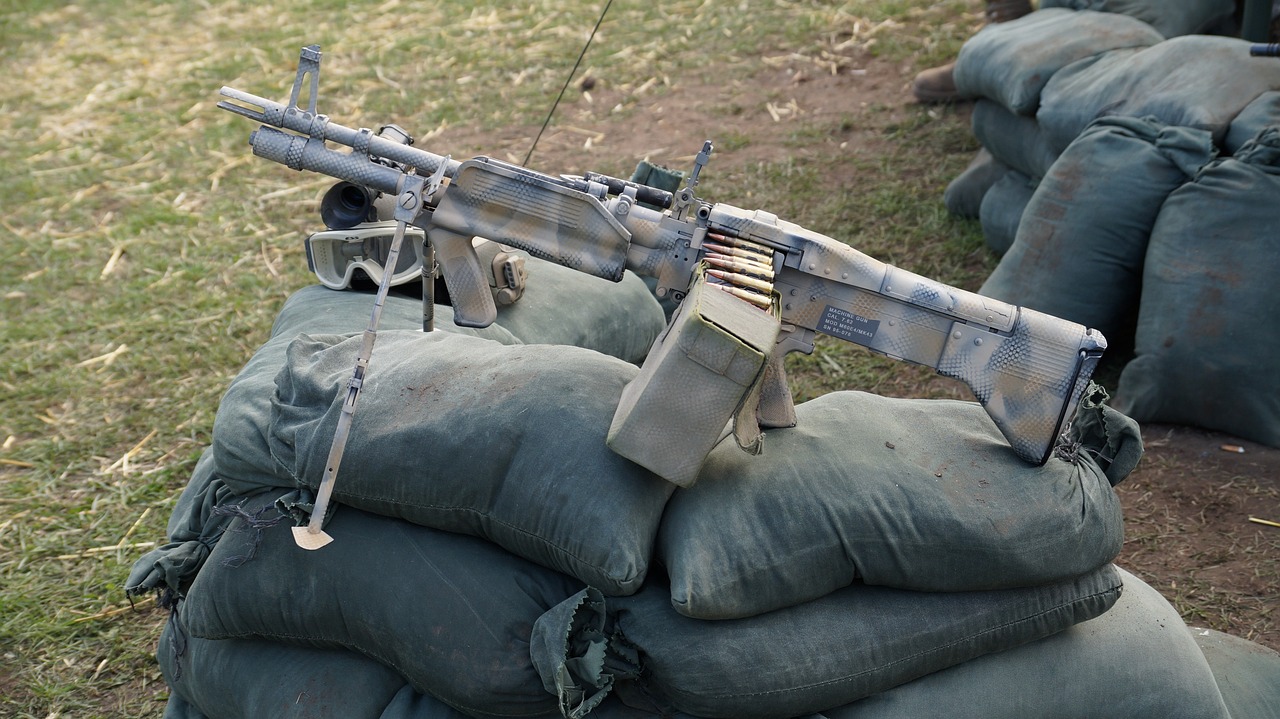
Realistic Scenario Planning
In the realm of modern warfare, the ability to anticipate and prepare for various conflict scenarios is nothing short of a game-changer. Advanced warfare simulations empower military strategists to craft intricate models of potential engagements, allowing them to analyze a multitude of variables and outcomes. Imagine being able to step into the shoes of a commander, facing a myriad of challenges and decisions without the real-world consequences—this is the essence of realistic scenario planning.
These simulations provide a platform where military leaders can explore different strategies, assess risks, and devise effective responses to dynamic battlefield conditions. By leveraging sophisticated algorithms and vast data sets, simulations can recreate authentic environments that mimic real-world conflicts. This not only enhances strategic readiness but also fosters a deeper understanding of the complexities involved in military operations.
One of the most significant advantages of realistic scenario planning is the opportunity for thorough analysis. Military planners can run simulations that incorporate various factors such as terrain, weather conditions, enemy capabilities, and troop morale. This multifaceted approach allows for a comprehensive evaluation of potential outcomes, helping to refine tactics and improve decision-making processes. For instance, a simulation might reveal that a particular strategy is more effective under specific conditions, prompting commanders to adjust their plans accordingly.
Moreover, these simulations facilitate collaboration among different branches of the military. By engaging in joint exercises within a simulated environment, units can practice working together, enhancing their ability to coordinate efforts in real-life scenarios. This kind of integrated training is crucial, as modern warfare often requires seamless cooperation between air, land, and sea forces. As a result, the military can build a more cohesive and adaptable fighting force.
To illustrate the impact of realistic scenario planning, consider the following table, which outlines some key benefits:
| Benefit | Description |
|---|---|
| Enhanced Strategic Readiness | Allows for thorough preparation by modeling various conflict scenarios. |
| Improved Decision-Making | Facilitates analysis of different strategies and outcomes. |
| Increased Collaboration | Encourages joint exercises among military branches for better coordination. |
| Risk Mitigation | Enables testing of strategies in a safe environment, reducing real-world risks. |
As military operations become increasingly complex, the importance of advanced warfare simulations in realistic scenario planning cannot be overstated. They not only prepare military leaders for the uncertainties of battle but also foster a culture of continuous learning and adaptation. By embracing these technologies, the military can ensure that it remains one step ahead in an ever-evolving landscape.
- What are advanced warfare simulations?
Advanced warfare simulations are sophisticated training tools that replicate real-world combat scenarios, allowing military personnel to practice decision-making and strategy development in a controlled environment.
- How do these simulations enhance training?
They provide realistic experiences that improve tactical decision-making, reduce training risks, and allow for immediate feedback and performance evaluation.
- Can simulations be used for joint military exercises?
Yes, simulations are ideal for joint exercises, promoting collaboration and communication among different military branches.
- What role does technology play in these simulations?
Technology enhances the realism and effectiveness of simulations, integrating elements like virtual reality to create immersive training experiences.

Collaboration and Team Dynamics
In the realm of military operations, collaboration and team dynamics are not just buzzwords; they are the lifeblood of successful missions. Advanced warfare simulations play a pivotal role in fostering these essential elements. When soldiers engage in simulations, they are not only practicing their individual skills but also learning to work as a cohesive unit. This is crucial because, in real combat situations, the ability to communicate effectively and operate seamlessly as a team can mean the difference between success and failure.
Imagine a scenario where a unit is tasked with a complex operation. Each member has a specific role, and the success of the mission hinges on their ability to work together. Through simulations, soldiers can practice these roles in a risk-free environment, allowing them to develop trust and understanding among team members. This is akin to a sports team rehearsing plays before a big game—each player must know their position and how it fits into the larger strategy.
Moreover, simulations provide a platform for soldiers to experience the dynamics of teamwork under pressure. They encounter challenging situations that require quick thinking and collaboration, mirroring the unpredictable nature of actual combat. This practice not only enhances their tactical skills but also builds camaraderie, as they learn to rely on one another in high-stakes scenarios.
One of the most significant advantages of these simulations is the ability to analyze team performance in real-time. Trainers can observe interactions and decision-making processes, providing valuable feedback to enhance team dynamics. This feedback loop is essential for identifying strengths and weaknesses within the unit, allowing for targeted improvements. For instance, if a particular team struggles with communication during a simulation, trainers can implement specific exercises to address this issue, ensuring that the team is better prepared for future challenges.
Additionally, the collaborative nature of these simulations fosters a culture of innovation. As team members brainstorm solutions and strategies together, they are more likely to come up with creative approaches that may not have been considered in a traditional training environment. This collaborative spirit can lead to the development of new tactics and methodologies that enhance overall operational effectiveness.
In conclusion, advanced warfare simulations are a powerful tool for enhancing collaboration and team dynamics within military units. By creating realistic environments where soldiers can practice working together, these simulations not only prepare them for the complexities of real-world operations but also instill a sense of unity and purpose. As military strategies continue to evolve, the importance of teamwork will remain paramount, making these simulations an invaluable asset in modern defense systems.
- How do advanced warfare simulations improve teamwork?
They provide a realistic environment for soldiers to practice communication and collaboration, helping them develop trust and understanding among team members. - What role does feedback play in simulations?
Feedback is crucial for assessing team performance, identifying strengths and weaknesses, and implementing targeted improvements. - Can simulations lead to innovative strategies?
Yes, by encouraging collaboration, simulations can foster creative problem-solving and the development of new tactics.
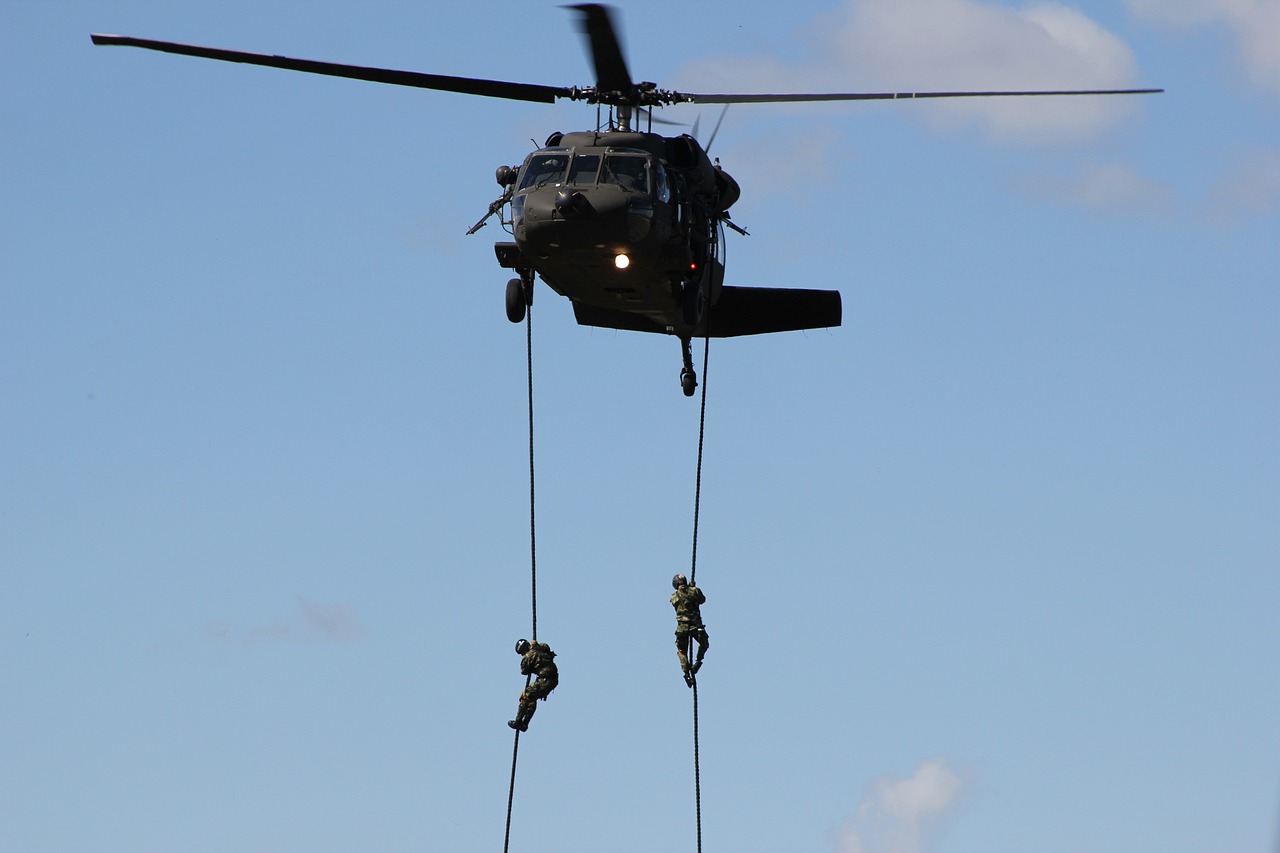
Technological Advancements in Warfare
In the ever-evolving landscape of military operations, technological advancements play a pivotal role in shaping the future of warfare. As we delve into the realm of advanced warfare simulations, it's essential to recognize how these innovations not only enhance training but also drive significant changes in military technology itself. Imagine a world where soldiers can engage in combat scenarios without the physical dangers of the battlefield; this is not just a dream but a reality made possible through cutting-edge simulations.
One of the most exciting aspects of these advancements is the integration of artificial intelligence (AI) into training programs. AI can analyze vast amounts of data, providing real-time feedback and adapting scenarios to challenge trainees effectively. This means that instead of following a one-size-fits-all approach, simulations can be tailored to the specific needs and skill levels of individual soldiers, ensuring that everyone receives the most relevant and effective training possible.
Moreover, the development of augmented reality (AR) and virtual reality (VR) technologies has revolutionized the way military personnel experience training scenarios. Imagine donning a VR headset and being transported to a simulated battlefield where you can interact with your environment as if it were real. This immersive experience not only enhances learning but also aids in the retention of critical skills and tactics. Trainees can practice complex maneuvers and decision-making processes in a safe yet realistic setting, which ultimately prepares them for the unpredictability of actual combat.
Additionally, the use of data analytics in warfare simulations has opened up new avenues for understanding and predicting enemy behavior. By analyzing patterns and outcomes from various simulations, military strategists can develop more effective tactics and strategies. This predictive capability is invaluable, allowing for a proactive rather than reactive approach to military engagements.
As we look toward the future, the importance of collaboration between technology developers and military leaders cannot be overstated. This partnership is crucial for ensuring that the tools being developed meet the real-world needs of soldiers on the ground. By fostering this collaboration, we can continue to push the boundaries of what's possible in military training and operational effectiveness.
In summary, the advancements in technology driven by advanced warfare simulations are not just enhancing training; they are fundamentally transforming how military operations are conducted. From AI-driven analytics to immersive VR training environments, these innovations are setting the stage for a new era in warfare where preparedness and adaptability are key to success.
- What are advanced warfare simulations?
Advanced warfare simulations are sophisticated training tools that replicate real-world combat scenarios, allowing military personnel to practice and refine their skills in a controlled environment. - How do technological advancements improve military training?
Technological advancements, such as AI and VR, enhance military training by providing realistic experiences, immediate feedback, and personalized learning opportunities for soldiers. - What role does data analytics play in warfare simulations?
Data analytics helps military strategists understand patterns and predict enemy behavior, leading to more effective tactics and strategies in real combat situations. - Why is collaboration important in military technology development?
Collaboration ensures that the tools and technologies being developed meet the actual needs of military personnel, leading to more effective training and operational outcomes.
Frequently Asked Questions
-
What are advanced warfare simulations?
Advanced warfare simulations are sophisticated training tools that replicate real-world combat scenarios, allowing military personnel to practice decision-making and tactical skills in a controlled environment. They combine various technologies, including virtual reality, to create immersive experiences that enhance learning and retention.
-
How do these simulations enhance tactical decision-making?
By immersing military personnel in realistic scenarios, advanced warfare simulations help improve their ability to make quick and informed decisions under pressure. This hands-on experience translates to better tactical effectiveness in actual combat situations, as soldiers become more adept at assessing threats and coordinating responses.
-
Are advanced warfare simulations cost-effective?
Absolutely! Utilizing simulations significantly reduces the need for expensive live exercises, allowing military organizations to allocate their resources more effectively. This means they can provide comprehensive training without the high costs associated with traditional methods.
-
What are the safety benefits of using simulations?
Simulations create a safe training environment where soldiers can practice complex operations without the risks associated with live training. This minimizes potential injuries and equipment damage, making it a safer option for military training.
-
How does virtual reality enhance training simulations?
The integration of virtual reality technology into advanced warfare simulations creates immersive experiences that engage trainees like never before. This technology allows soldiers to interact with their environment, making the training more realistic and effective.
-
Can simulations be adjusted for different training needs?
Yes! One of the great advantages of advanced warfare simulations is their scalability. They can be easily adjusted to accommodate various unit sizes and mission complexities, making them versatile tools for training a wide range of military personnel.
-
How do simulations provide feedback for performance evaluation?
Advanced simulations offer immediate feedback on performance, allowing trainers to assess skills and identify areas for improvement. This is crucial for developing competent military leaders who can adapt and grow in their roles.
-
What role do simulations play in realistic scenario planning?
Simulations enable military strategists to model various conflict scenarios, allowing for thorough analysis and preparation for potential future engagements. This enhances overall strategic readiness and equips military units to handle diverse challenges.
-
How do simulations foster collaboration among military units?
By encouraging teamwork and communication, advanced warfare simulations help improve group dynamics essential for successful operations. They create opportunities for units to practice working together, which is vital in high-pressure situations.
-
What technological advancements have emerged from warfare simulations?
The development of advanced warfare simulations drives innovation in military technology, leading to improved equipment and tactics. These advancements can be tested and refined in controlled environments, ultimately enhancing the effectiveness of military operations.






